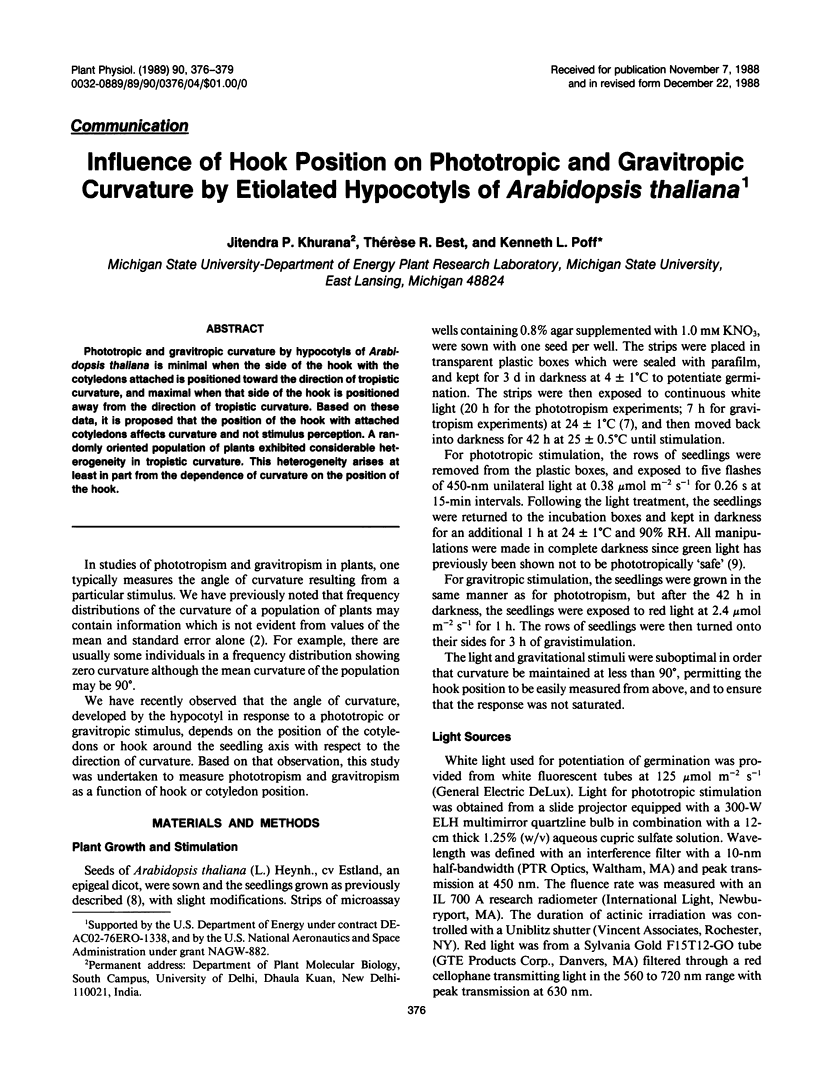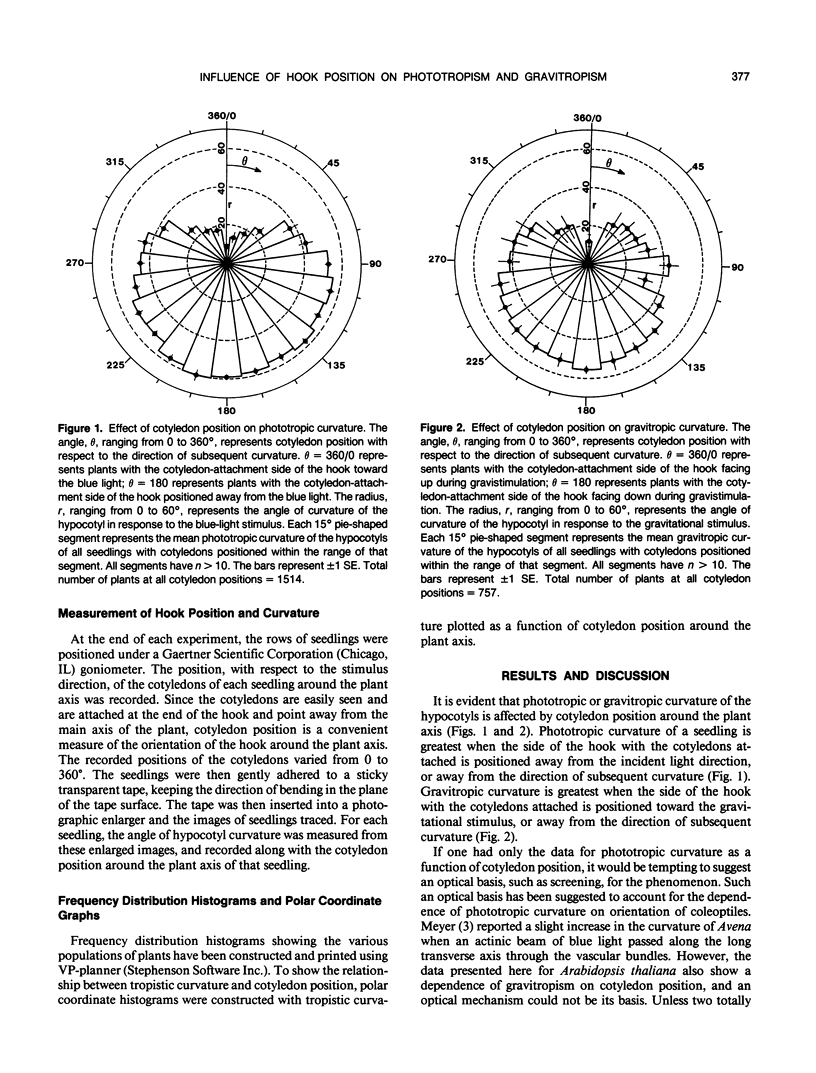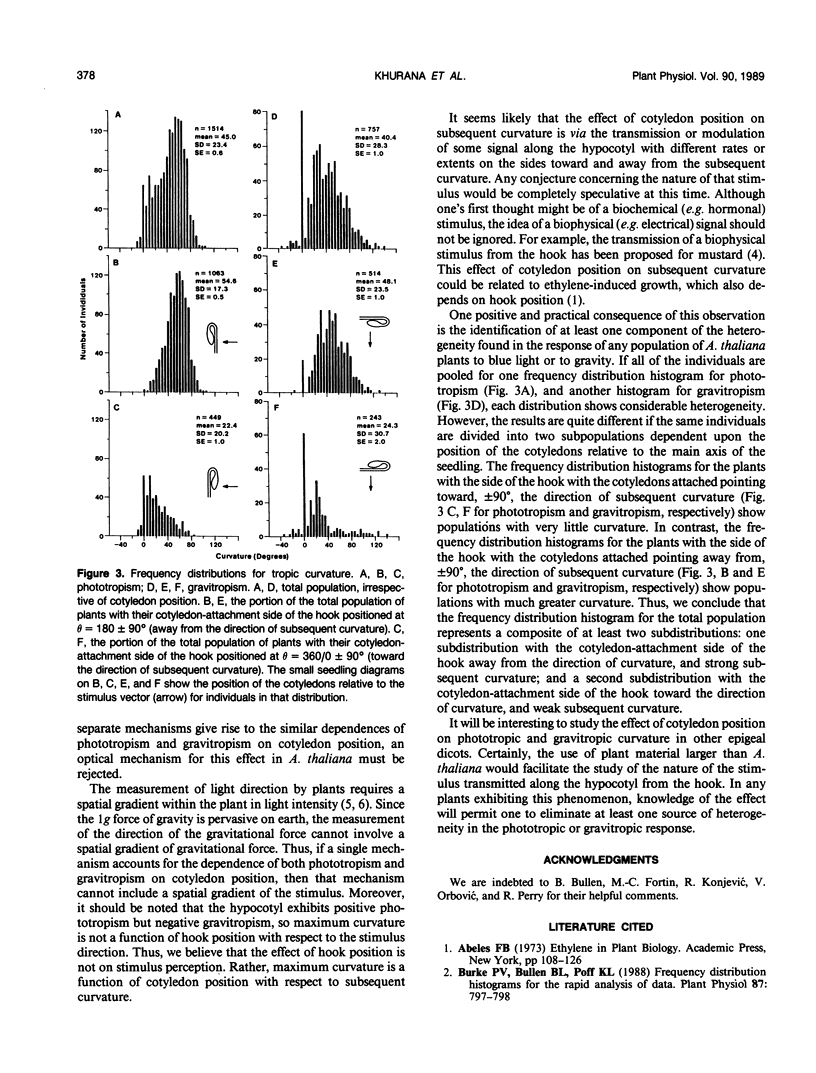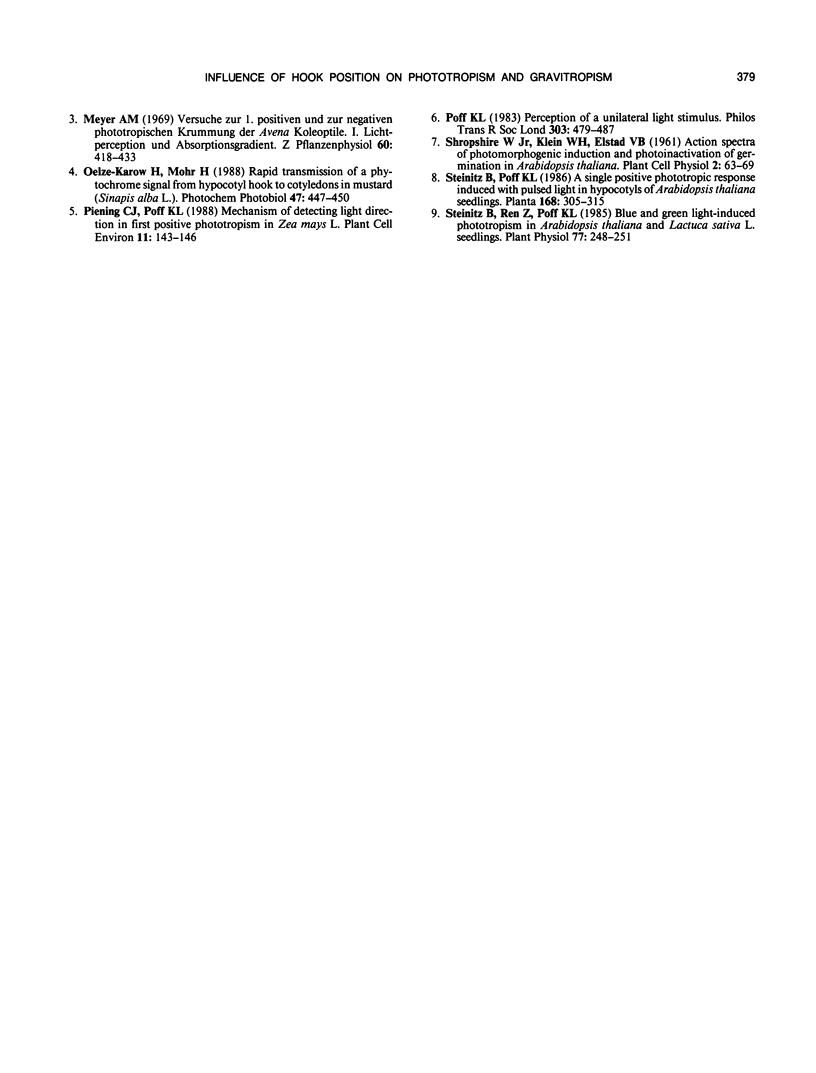Abstract
Phototropic and gravitropic curvature by hypocotyls of Arabidopsis thaliana is minimal when the side of the hook with the cotyledons attached is positioned toward the direction of tropistic curvature, and maximal when that side of the hook is positioned away from the direction of tropistic curvature. Based on these data, it is proposed that the position of the hook with attached cotyledons affects curvature and not stimulus perception. A randomly oriented population of plants exhibited considerable heterogeneity in tropistic curvature. This heterogeneity arises at least in part from the dependence of curvature on the position of the hook.
Full text
PDF



Selected References
These references are in PubMed. This may not be the complete list of references from this article.
- Burke P. V., Bullen B. L., Poff K. L. Frequency distribution histograms for the rapid analysis of data. Plant Physiol. 1988;87:797–798. doi: 10.1104/pp.87.4.797. [DOI] [PMC free article] [PubMed] [Google Scholar]
- Steinitz B., Ren Z., Poff K. L. Blue and Green Light-Induced Phototropism in Arabidopsis thaliana and Lactuca sativa L. Seedlings. Plant Physiol. 1985 Jan;77(1):248–251. doi: 10.1104/pp.77.1.248. [DOI] [PMC free article] [PubMed] [Google Scholar]


